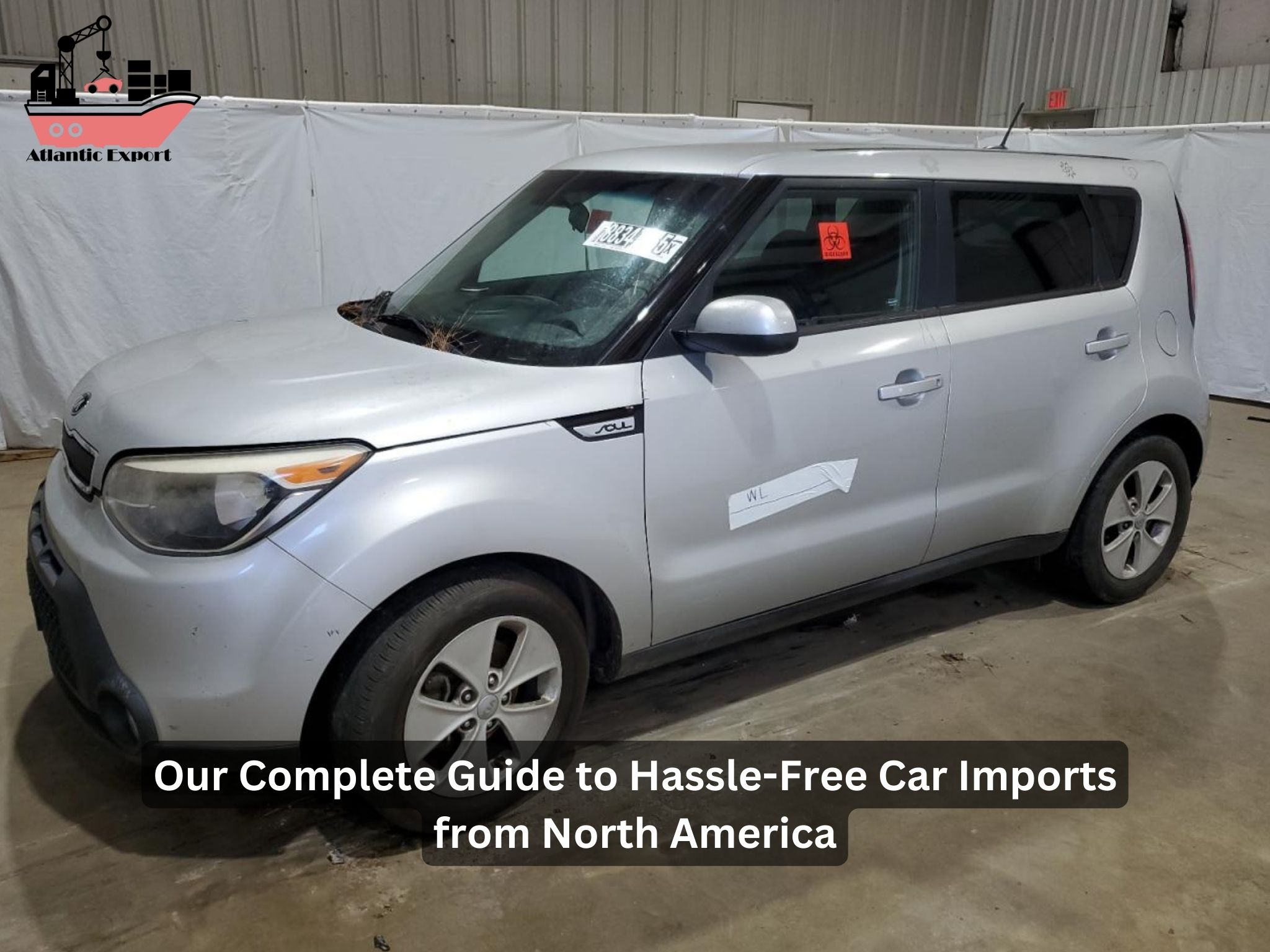Importing a vehicle from North America—whether from the United States or Canada—can be a rewarding but complex process. Understanding customs regulations, import duties, compliance standards, and required documentation is crucial to a smooth importation. In this detailed guide, we cover every step of the import process to help you navigate the requirements seamlessly.
Why Import a Car from North America?
Many buyers look to the USA market or Canada for their vehicle imports because of lower prices, a wider selection of models, and unique specifications that might not be available in their home country. However, navigating the import process involves understanding customs duties, taxes, compliance requirements, and vehicle registration.
Understanding the Car Import Process
Step 1: Research Import Regulations and Compliance Standards
Before you begin the import process, familiarize yourself with your country’s importation regulations. Many nations require imported vehicles to meet specific safety, emissions, and environmental standards before they can be legally registered.
- The United States has strict EPA (Environmental Protection Agency) emission standards and FMVSS (Federal Motor Vehicle Safety Standards).
- Canada enforces the Canadian Motor Vehicle Safety Standards (CMVSS).
- Other countries may have different compliance requirements, such as specific bumper standards, fuel-economy ratings, or gas-guzzler taxes.
Step 2: Selecting the Right Vehicle for Importation
When choosing a car to import, consider:
- Model year: Some countries restrict importing used cars beyond a certain age.
- Vehicle history: Check the detailed vehicle history to ensure it’s not stolen, salvaged, or subject to recalls.
- Compliance with local safety and emissions regulations: A nonconforming vehicle may require costly modifications.
Step 3: Understanding Import Taxes, Fees, and Duties
Importing a car involves various taxes, fees, and customs duties, which depend on:
- Vehicle value: Many nations calculate import duties based on the car’s declared value.
- Engine size and emissions: Higher emission standards may result in extra charges.
- Shipping method: Costs differ for roll-on/roll-off (RoRo) shipping, air freight, and container shipping.
- Customs clearance fees: Hiring a customs broker can streamline the customs clearance process but adds an additional cost.
Choosing the Best Shipping Method for Your Car Import
Roll-on/Roll-off (RoRo) Shipping
RoRo shipping is a cost-effective option where cars are driven onto a cargo ship and secured for transport. This method is widely used for vehicle imports but does not allow for personal belongings to be shipped with the car.
Container Shipping
For added protection, consider container shipping. Vehicles are loaded into sealed containers, safeguarding them against damage and theft. This is ideal for high-value or used cars that require extra care.
Air Freight Shipping
For urgent imports, air freight is the fastest but most expensive shipping option. This method is typically reserved for luxury cars, rare models, or time-sensitive deliveries.
Customs Clearance and Documentation Requirements
Essential Documents for Importing a Vehicle
To ensure a smooth customs clearance process, you’ll need the following documents:
- Bill of Sale: Proof of vehicle purchase.
- Title and Registration: Ownership verification.
- EPA Form (for U.S. imports): Certifies compliance with federal emission standards.
- Certificate of Conformity: Verifies compliance with national safety and emissions standards.
- Import Declaration Form: Submitted to customs authorities.
- Proof of Identity: Required for vehicle registration.
- Customs Duty Payment Receipt: Proof of paid customs duties and import taxes.
Navigating Customs Clearance
- Hire a Customs Broker: A licensed customs broker helps manage paperwork, import duties, and customs regulations.
- Obtain Import Approval: Some countries require importers to secure approval before shipping.
- Pass Inspection: Many nations require imported vehicles to undergo safety and emissions testing before they are cleared.
Registering Your Imported Vehicle
Once your car clears customs, you must register it with your local Department of Motor Vehicles (DMV) or equivalent authority. Registration may require:
- Vehicle Identification Number (VIN) Inspection
- Payment of Registration Fees and Taxes
- Proof of Insurance
- Safety and Emissions Certification
Additional Costs to Consider
Importing a car comes with extra expenses beyond shipping fees and import duties, including:
- Modification Costs: If your foreign car doesn’t meet U.S. safety or fuel-economy standards, it may require modifications.
- Storage Fees: Delays in customs clearance can lead to extra storage charges.
- Inspection Fees: Mandatory inspection and compliance testing costs.
Why Choose Atlantic Export for Your Car Imports?
At Atlantic Export, we specialize in international vehicle shipping, providing seamless customs clearance and logistics solutions. Our team ensures compliance with federal motor vehicle and EPA standards, helping you avoid unnecessary delays and costs. Whether you’re importing from the USA market or Canada, Atlantic Export guarantees a hassle-free experience.
Conclusion
Importing a car from North America requires careful planning, thorough research, and strict compliance with customs regulations. By understanding the import process, selecting the right shipping method, and working with experienced professionals like Atlantic Export, you can ensure a smooth and successful vehicle importation experience.
FAQs
1. What is the cheapest way to import a car?
The most cost-effective method is Roll-on/Roll-off (RoRo) shipping, as it reduces handling costs compared to container shipping.
2. Are used cars subject to the same import regulations as new cars?
Yes, but used cars may require additional compliance modifications to meet safety and emissions standards.
3. How long does the importation process take?
The import process can take anywhere from a few weeks to several months, depending on customs clearance, inspections, and shipping delays.
4. Do I need a customs broker to import a car?
While not always required, hiring a customs broker can simplify the customs clearance process and ensure compliance with all import regulations.
5. What are the most common additional costs when importing a vehicle?
Besides shipping fees and import duties, expect potential charges for compliance modifications, inspections, storage, and taxes.

Leave a Reply